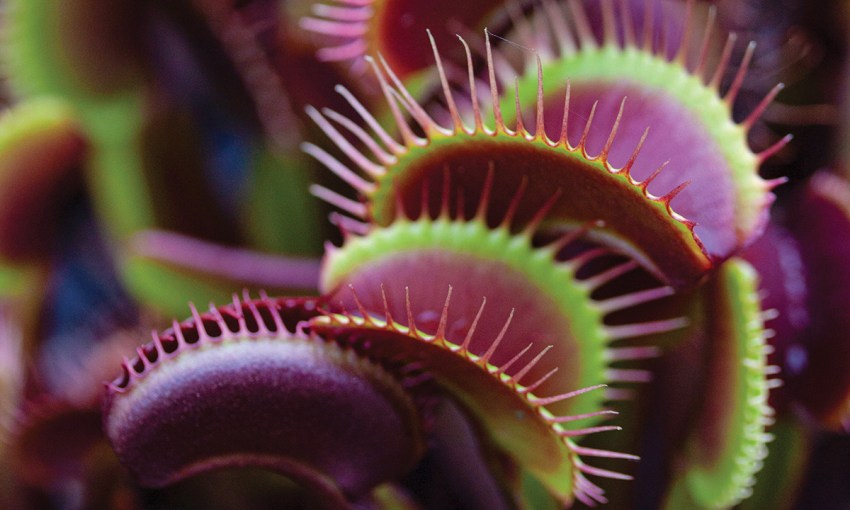Given the right conditions, carnivorous plants are no more difficult to grow than regular plants, and their unusual shapes and colours can be extremely rewarding.
Carnivorous plants: Hungry for something new?
When most people think of carnivorous plants, images of exotic jungles are often the first thing that come to mind. While this is true for some species, these fascinating plants can in fact be found on every continent except Antarctica.
Many people are surprised to learn that Australia in fact boasts the largest diversity of carnivorous plants of any single continent; roughly 30 per cent of the currently recognised 750 species. You may even find carnivorous native plants while bushwalking in the Adelaide Hills, however many of the Australian species have very specific needs, and as such are almost never found in the nursery industry.
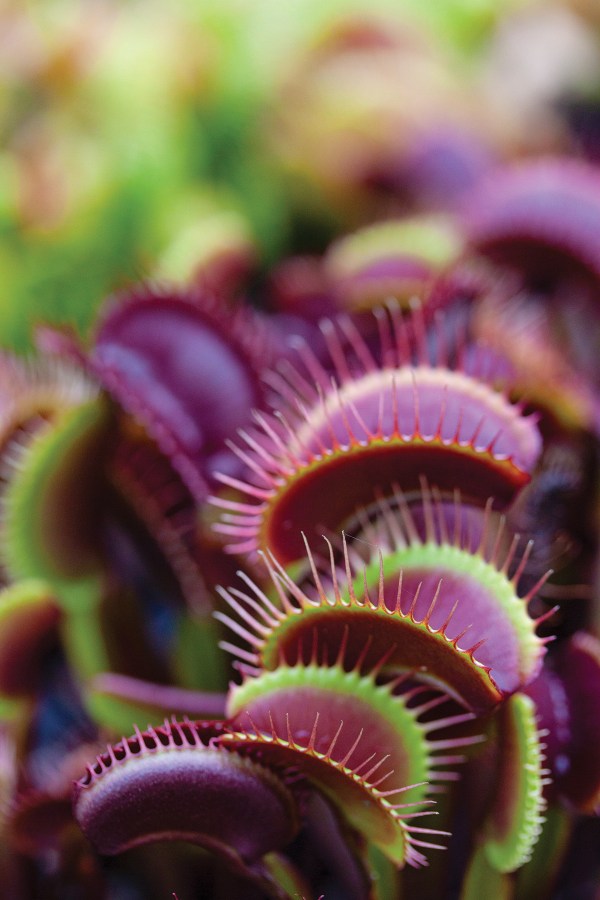
The most common genera available to people, the Venus fly trap (Dionaea), trumpet pitcher plant (Sarracenia), and some of the sundews (Drosera) are native to warm, temperate peat swamps. These environments, with their extremely acidic soil, constant wet conditions, and bright open aspect hold very little soil nutrition. It is these conditions that drove the dramatic adaptations we see in these plants.
Their leaves have been modified to lure, trap, and digest insects and other small invertebrates as a way of supplementing their nutrition, allowing them to thrive in an otherwise difficult environment. To get the most out of our plants, we need to look at their native environment, and try to emulate it. From what is described above we can take away a few key points: acidic, water-retentive soil, wet conditions, bright light, and a warm temperate climate.
Unlike most other plants found in nurseries, carnivorous plants cannot be grown in commercially available potting mixes. These soils are far too rich in nutrients, and will cause the roots to rot, leading to a quick death. Instead, it is best to make up your own soil mix.
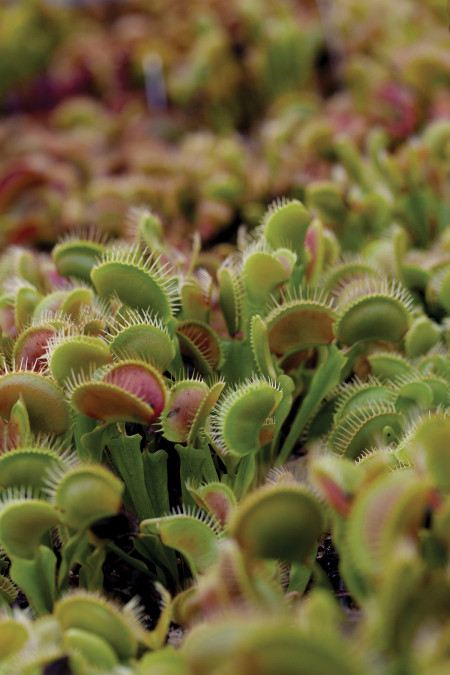
Sphagnum peat moss is the most widely used base for these types of plants. It is very acidic, nutrient-poor, and can hold up to 10 times its weight in water. This makes it the perfect choice for bog dwelling plants. Most growers will choose to mix peat moss in a 50/50 ratio with a suitable aggregate – the two most commonly used being washed propagation sand or pearlite. This mix has good water holding capacity while still allowing some aeration, and, when used with the following watering method, provides fantastic results.
Water is arguably the most important factor concerning carnivorous plants. Coming from habitats that are constantly wet, the easiest way to simulate this is to grow plants in pots with drainage holes, and sit them in a tray or saucer that stays constantly full of water. Carnivorous plants are generally very intolerant of dissolved salts, specifically calcium, and as such often struggle with South Australia’s hard tap water.
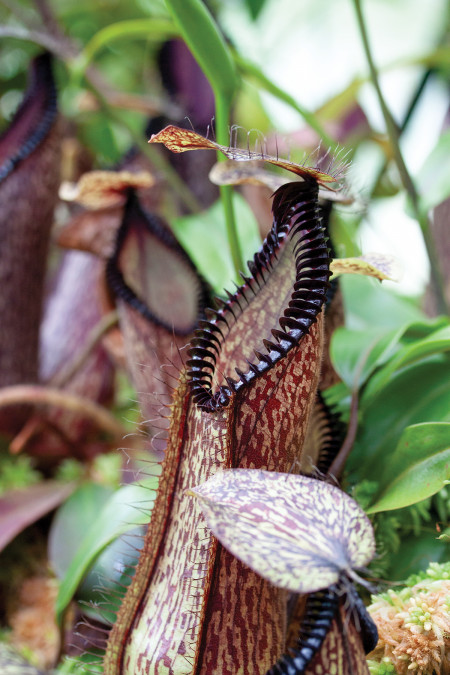
The easiest way to get around this is by using rainwater, as it is generally of good quality. For those who are unable to source rainwater, distilled water can be purchased from the supermarket. For the real diehards, reverse osmosis water filters can be purchased for an unlimited supply of pure water. If hard water is used with the tray method of watering, salts will quickly accumulate as the water evaporates, slowly poisoning the plants.
The last point to talk about, and the one people get wrong most often, is the environment in which to grow these plants. As mentioned before, people will often assume carnivorous plants come from tropical jungles, growing them the same way they would house plants such as Monstera or Spathaphyllum. Unfortunately, these conditions will often result in a slow death.
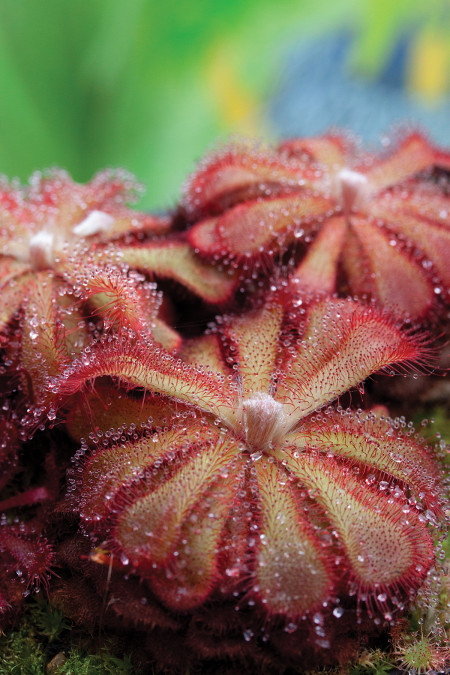
Venus fly traps, sundews, and trumpet pitcher plants are almost always found growing in bright sunny conditions, and this is the key to getting the best colouration and trap formation on plants. When grown in an appropriate container of water, and not allowed to dry out, these plants will easily get through temperatures in the mid 40s, while also surviving frosts and temperatures below zero. If fact, Venus fly trap and trumpet pitcher plants are true herbaceous perennials, and for their long-term survival require a winter dormancy. Just like a Hosta, or Echinacea, these two genera will cease growth in the wintertime, dying back to near ground level, only to reappear the following spring.
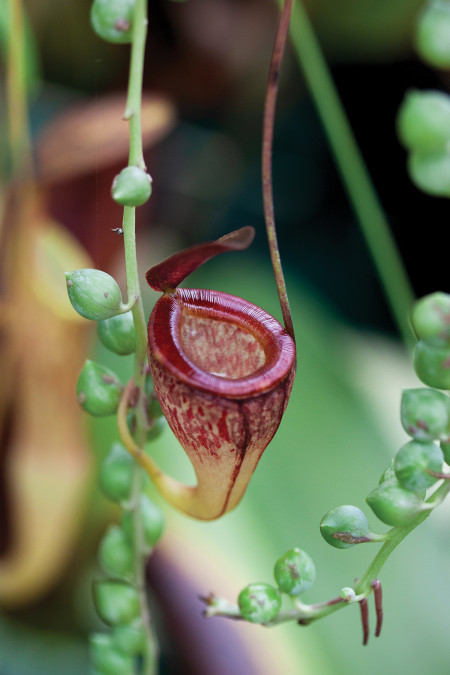
There is one more variety sometimes seen in nurseries, considered the king of carnivorous plants by many: the Nepenthes, or tropical pitcher plant. These are among the largest carnivorous plants, having been recorded catching small mammals in pitchers that can get as large as rugby balls. Nepenthes are true tropical plants, mainly found throughout Southeast Asia. As such, they require distinctly different conditions to the plants discussed above.
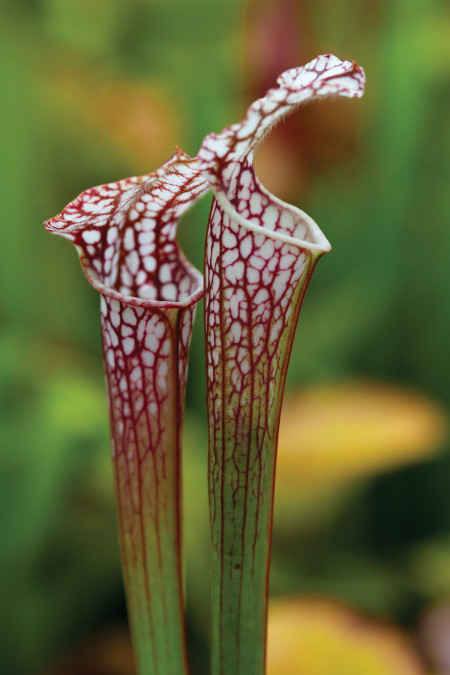
Tropical pitcher plants are climbing vines, generally found in dappled light, growing among moss and leaf litter. They are incapable of tolerating frost or full sun, and are best suited to be grown in protected positions – under verandahs, in greenhouses, or bright windowsills. These plants are often epiphytic; growing on other plants, they are intolerant of waterlogged soil. To mimic this, many people have good success using hanging baskets filled with moist sphagnum moss, as this allows for good drainage and aeration amongst the roots.
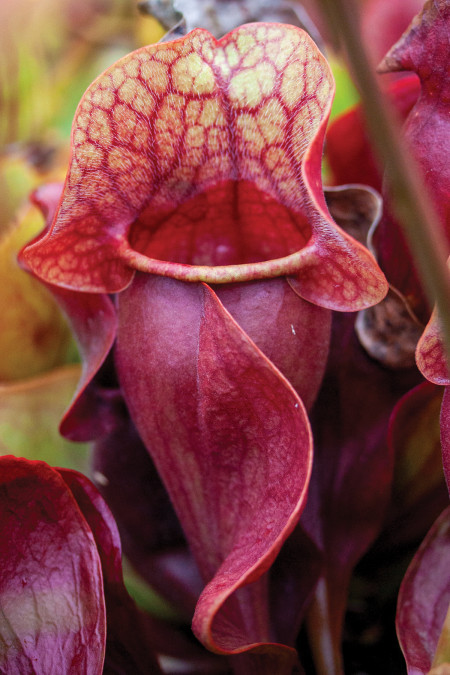
Because Nepenthes are grown in free-draining containers, water of poorer quality can be used, as there is less likely a build-up of salts. This means that people without access to good water may have better success growing tropical pitcher plants over the more sensitive species.
Although many people view carnivorous plants as difficult to grow, if a few key aspects of their care are attended to, these fascinating plants are in fact quite forgiving.
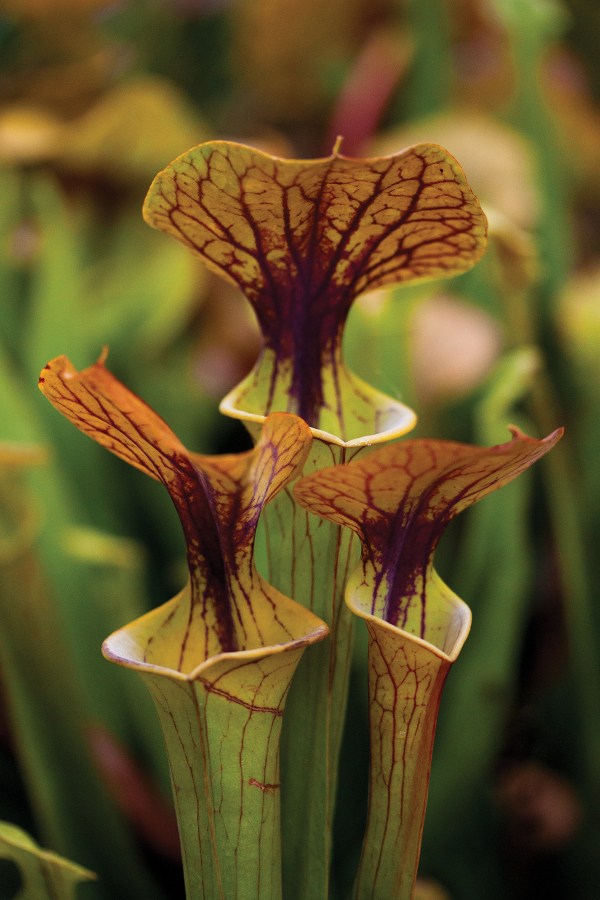
The use of good quality water, acid soil, and a bright outdoor aspect should see most carnivorous plants thrive. If you are growing house plants, why not give Nepenthes a try. Once the basics of growing are understood, there is a wide world insect-eating plants to try your hands at, with a large community behind it.
This article first appeared in the Autumn 2022 issue of SALIFE Gardens & Outdoor Living magazine.
including free delivery to your door.



